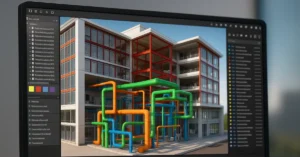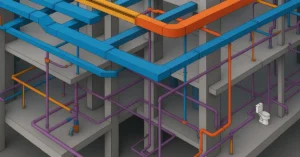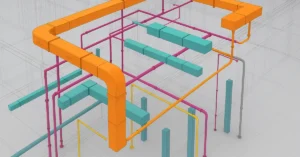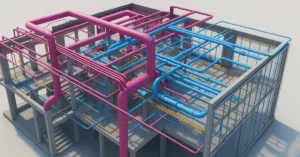Discover Brutalist buildings in Ankara
Brutalist architecture is one of the most polarizing styles in modern design. Characterized by its use of raw concrete, heavy massing, and functional aesthetics, Brutalism has left a strong imprint on cities worldwide. In Turkey, particularly in the capital city of Ankara, this architectural movement emerged as a powerful symbol of state ambition, urban transformation, and modernist experimentation.
From government complexes to cultural institutions, brutalist buildings in Ankara represent a unique intersection of ideology and design. They stand as both relics of the past and living monuments of urban resilience. In this blog, we’ll explore the top brutalist structures that define Ankara’s architectural character, discuss their significance, and look at how the city is engaging with this controversial legacy today.
What is Brutalism? A Quick Overview
Brutalism, derived from the French phrase “béton brut” (raw concrete), emerged in the mid-20th century as a response to the ornamentation of earlier architectural styles. It was pragmatic, functional, and often monumental. Buildings were typically made of exposed concrete, characterized by repetitive geometric forms, block-like structures, and minimal decorative elements.
The style spread globally, especially in socialist or post-war environments, where governments wanted to convey strength, order, and modernity. Ankara, as Turkey’s planned capital and administrative hub, became an ideal playground for brutalist expressions.
1. Middle East Technical University (METU) Campus Buildings
Location: Ankara, Çankaya
One of the most striking brutalist campuses in the world, the METU campus is a showcase of Turkish brutalist architecture. Designed by Behruz Çinici and Altuğ Çinici in the late 1950s and 1960s, the campus emphasizes strong geometry, repetitive modular forms, and extensive use of exposed concrete.
METU’s library, faculty buildings, and open amphitheaters combine function with aesthetics, forming a cohesive brutalist ensemble. The architects carefully designed the structures to blend with the terrain while asserting a bold architectural identity. The campus is not just an educational hub but also a cultural landmark that embodies the ethos of Brutalism.
2. Turkish Parliament Extension (TBMM Annexes)
Location: Atatürk Boulevard, Ankara
The original Turkish Parliament building is neoclassical, but its later additions, particularly in the 1960s and 70s, follow brutalist principles. Large concrete surfaces, rigid symmetry, and minimalist detailing dominate these annexes. These additions were functional and utilitarian, designed to accommodate a growing bureaucracy in post-war Turkey.
While often overshadowed by the original parliament building, the annexes are important examples of brutalism adapted to institutional needs.
3. Atatürk Cultural Center (AKM)
Location: Atatürk Boulevard, Ankara
Though less renowned than its Istanbul counterpart, Ankara’s Atatürk Cultural Center is a significant brutalist structure. With its massive concrete facade and deeply recessed windows, AKM stands as a solemn example of public brutalism. Its design reflects the state’s ambition to fuse cultural importance with a commanding architectural presence.
Inside, the building houses auditoriums, exhibition spaces, and cultural offices. The heavy massing and minimal ornamentation reflect the brutalist principle of form following function.
4. Social Security Institution Building (SGK)
Location: Kızılay, Ankara
The SGK headquarters is a textbook example of brutalist architecture serving state functionality. The building features exposed concrete grids, rigid modular units, and deep overhangs that provide shade and visual depth. Its utilitarian nature is a nod to the bureaucratic expansion of Turkey in the mid-20th century.
While not beloved by all, the SGK building represents the strong visual and ideological narrative of modern Turkey’s welfare state.
5. Emek Business Center
Location: Kızılay, Ankara
This commercial structure is one of Ankara’s oldest brutalist office buildings. Built during a time of rapid economic development, the Emek Business Center’s raw materials and functional design made it a symbol of capitalist ambition wrapped in socialist aesthetics.
The facade features sharp angles, exposed concrete, and a repetition of windows that echoes the brutalist penchant for geometric rhythm. Though commercial in function, it maintains the architectural rigor of its more civic counterparts.
6. Turkish Radio and Television Corporation (TRT) Headquarters
Location: Oran, Ankara
Designed in the 1970s, the TRT building reflects both brutalist and modernist influences. With large horizontal slabs and minimal decorative features, the structure mirrors the international trend of making media and broadcast centers imposing yet functional.
The use of concrete as both structural and aesthetic element adds a level of rawness that reinforces its brutalist identity. It remains a central piece in Ankara’s state-run media landscape.
7. Ministry of Energy and Natural Resources
Location: Balgat, Ankara
Another lesser-known but architecturally significant structure is the Ministry of Energy building. Built in the 1980s, it exhibits classic brutalist elements like linear forms, deep shadows, and raw concrete facades. The blocky mass and minimalism make it visually distinct among modern glass buildings in the area.
It’s a government building designed to impress and withstand time—a hallmark of brutalist philosophy.
8. Former Ministry of Tourism Building
Location: Kavaklıdere, Ankara
Now repurposed for other functions, this building was a fine example of how Brutalism adapted to mid-20th-century governmental needs. The heavy exterior, recessed glass panels, and simple rectangular floor plan made it highly functional and resilient.
While it might not receive as much recognition today, architectural historians see it as an important artifact of state-driven design during Turkey’s modernization phase.
Public Perception and the Brutalist Debate in Ankara
Like many cities with brutalist legacies, Ankara faces divided opinions. Some residents view these buildings as cold, oppressive reminders of a rigid state, while others see them as bold artistic expressions that define an era.
Recent decades have seen a soft shift in perception. Younger generations, fueled by social media and renewed academic interest, are beginning to appreciate the raw beauty and historical significance of brutalist structures. Urban tours and academic publications now include brutalist routes, offering new ways to engage with Ankara’s architectural heritage.
Preservation Challenges in a Rapidly Changing City
Ankara is transforming rapidly, with new skyscrapers and modern office parks emerging across the skyline. In this rush for modernity, many brutalist buildings face threats from neglect, redevelopment, or stylistic renovation.
Efforts are underway to document and preserve significant examples. METU, for instance, is often cited in preservation campaigns as a model of thoughtful brutalist design worth protecting. Nonetheless, the tension between past and present continues to play out in zoning policies and architectural decisions.
Why Brutalism Still Matters in Ankara
Brutalist buildings in Ankara are more than architectural curiosities. They represent a critical moment in Turkey’s national development, reflecting the political, economic, and cultural aspirations of the time. They challenge our ideas of beauty, permanence, and utility.
More importantly, they offer a counter-narrative to the glass-and-steel sameness of modern urban design. Their individuality, their honesty of material, and their monumental ambition make them worth preserving and celebrating.
Conclusion
The brutalist buildings in Ankara reveal a bold chapter in Turkey’s architectural and political history. From educational institutions and government headquarters to commercial complexes, these concrete giants define much of the capital’s mid-century character.
Whether admired or criticized, these structures demand attention. They tell stories of ambition, ideology, and design evolution. As Ankara grows and modernizes, the challenge lies in preserving these powerful reminders of the past without losing sight of the future.
For anyone passionate about architecture, history, or urban design, exploring Ankara’s brutalist landmarks offers a fresh perspective on the city’s identity and the lasting legacy of brutalism.
If you’re interested in learning more about architecture firms in Europe, check out this comprehensive list of the top 50 firms compiled by Archgyan. From innovative startups to long-established industry leaders, this list has it all. Take a look and discover some of the most inspiring and influential architecture firms in Europe today.
If you’re interested in architecture and want to learn more about this amazing field, subscribe to our podcast on youtube
For more SketchUp tutorials, head to https://www.sketchupguru.com










